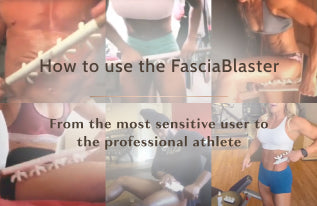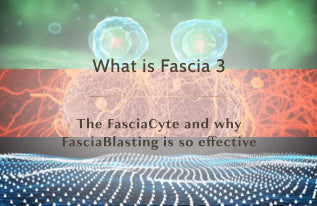What is Fascia? Part 2 by Ashley Black
Ashley Black’s Expansion on Fascia Science and The True Nature of Fascia

It could be THE Most Important Factor Affecting Human Health
Here is what the latest research says about the fabulous and wondrous fascia-

Fascia is a communication system.
Most people believe that fascia is a communication system because it is innervated by nerves, i.e., fascia houses it. Like a wire cover to a wire. But new science is emerging, however, that blows the lid off of this limited understanding. Fascia is its own communication system, potentially communicating instantaneously and certainly faster than the nervous system. The best literature I found to describe this comes from the National Library of Medicine journal. They describe fascia’s communication like this: “Each cell communicates with the other cells by sending and receiving signals; this concept is a part of quantum physics, and it is known as quantum entanglement.”8. And if you like this type of stuff, check out my What is Fascia 4 blog about the quantum theories associated with fascia. For the purposes of this blog, it’s just important to recognize that fascia is a vehicle for sharing information across cells. If fascia is dysfunctional, it can block or trap information.

Fascia supports life.
The brilliant Dr. Yung describes fascia eloquently in his paper.1 Fascia and the Primo Vascular system, he says, “ fascial anatomy switches anatomical study from the “dead” to the “living.” When the supporting-storing system wears out, the body will die. When the wax is depleted, the flame will extinguish, as with the human body”. This description is like an anthem for a Fasciologist, broadening the understanding of anatomy to two systems. The supporting structure, the fascia, and then everything else.

Fascia determines the shape and tightness of the skin.
Fascia is the collagen matrix that supports our skin and determines it’s basic shape. That is why FasciaBlasting is so effective for cellulite9 and wrinkles2. But that is not the only way fascia interplays with skin. New research 2 shows that youthful skin has more blood capillaries. Because fascia houses the blood and could potentially be a vascular system of blood plasma, healthy fascia allows our blood to reach the skin. (see above) Furthermore, researchers found that the skin contains “stem cell reservoirs” in the sebaceous glands that release into the skin using pressure. The pressure of the FaceBlaster tools and its ability to directly hit the sebaceous gland is why we believe it works so well for improving the skin. Skincare has “accidentally” become a focus of Ashley Black because there is no denying that the science supports many ways to impact the skin with the FasciaBlaster tools.

Fascia holds memory.
Outdated science says we hold memories in our brains. But new science explains that we hold memories in our tissues. The idea that “the body knows.” Pub Med3 describes this in plain English: "Fascia assists gliding and fluid flow and holds memory and is highly innervated.” So, while we are at it, fascia is a fluid assistant, aka a key player in the movement and detoxification of tissues.

Fascia houses our blood.
Blood vessels are indeed found within the fascia, and you can see them in plain sight and better understand them under the microscope. In the amazing series “Strolling Beneath the Skin” by Dr. Jean-Claude Guimberteau, you can get an incredible visual of blood vessels in the fascia. But what is more exciting is the idea that fascia is a giant sponge soaking up the best parts of blood into its jelly mess and delivering it to cells, acting as a vascular system. Recent research findings “have led them {researchers} to consider primo vascular system another circulating system” 2 How exciting, a second vascular system! New research is also emerging on the “liquid plasma” concept, which was previously thought to be more of a concept. Still, it turns out that it is the way researchers are characterizing what we have been saying for years- that plasma oozes from the capillaries into the liquidy gel fascia as part of the vascular system, sending nutrition into the cells and sifting toxins back into the capillaries.4

Fascia houses our nerves.
It should be well known that fascia houses nerves; this is taught in traditional medical models, but there is still confusion in some literature. But fascia housing nerves is way less sexy than the idea that fascia is the primary communication system, as discussed above. Over a century ago, Andrew Taylor Still, MD, DO and the founder of Osteopathic Medicine, stated, “‘No doubt nerves exist in the fascia …’ and recommended that all fascial tissues should be treated with the same degree of respect as if dealing with ‘the branch offices of the brain.” Then, the “observations of a rich presence of sensory nerves in fascial tissues were independently announced” by three teams from different countries in the first international Fascia Research Congress. When we look at Neurology as a medical field, fascia must be a consideration.

Fascia houses our lymphatic system.
The lymphatic system has been identified as housed in the fascia system, especially the superficial fascia. The lymphatic system is so important because it controls a large portion of our detoxification and immune system responses. In a study by NIH5, researchers aimed at bringing clarity to fascia related to detoxification identified the “presence of lymphatic vessels inside the superficial fascia.” This lends hope for fascia science and conditions such as Lipedema and other conditions related to the lymphatic system.

Fascia pulls our skeleton into dysfunctional positions.
Fascia is a continuously connected web, so the whole will react when one part responds. I love the TED talk on this: “Fascia and the Mystery of Chronic Pain” that uses a “fascia suit” to visualize this. I explain this concept in my book like a bed sheet that pulls if you grab it at any point. This is huge for Orthopedics and pain because the fascia twists knees compresses spines, pulls shoulders, etc. The pain* comes later when we live life this way.

Fascia separates our muscles.
Think of it like this: we don’t have 600 muscles; we have one muscle separated by fascia. This is the structural fascia, often referred to as a sheath or covering of the muscles. This sheath is formed by individual muscle fibers surrounded by fascia, connecting in these fabric-like membranes. The National Institute of Health explains it this way: “Fascia is considered to be any dense irregular connective tissue sheet in the human body, including aponeuroses, joint capsules, or muscular envelopes such as the endo-, peri-, and epimysium.”6 Ashley Black explains structural fascia and interstructural or myofascial in this video.

Fascia holds our organs in place.
Without fascia, the support system of the body, our “parts,” would drop to the ground like dropping a basket of balls. Its different properties range from stiff structural fascia to liquid, viscous Jello-like fascia; it holds every cell in place. Like a Jello mold holds the fruit, the fascia holds our “parts.” Fascia is the support, and our parts are the functional system. Like tennis balls in a bin, suspended by the space around them, this is how fascia works as a system for support.

Fascia is a sensory mechanism for the body and a reactionary protective system.
It is a reactionary system that is highly sensitive. Fascia contains four types of sensory nerve endings, which are responsive to mechanical stimulation:
- 1. Golgi organs
- 2. Ruffini receptors
- 3. Pacini corpuscles
- 4. Interstitial receptors
Together, these sensory nerve endings can be called fascial mechanoreceptors, which means that they respond to mechanical tension and/or pressure. Such mechanoreceptors have been found in intramuscular, as well as extramuscular, fascial tissues.7

So when our fascia responds by "clamping down," it's trying to protect us, responding to mechanical stress. And it does it in a big way because it is so susceptible. In fact, Robert Schleip, MD, at the Technical University of Munich in Germany, recently estimated that an adult's fascia contains approximately 250 million nerve endings, similar to, or slightly more than, the skin. "It is beyond any doubt our richest sensory organ,"

Fascia determines the quality of muscle performance.
The fascia doesn’t just cover muscles in a sheath, as a general Google search would have you believe. Fascia surrounds each and every muscle fiber, which means it penetrates in a 3D web through the muscle, forming the layers known as the endomysium, perimysium, and epimysium. Ashley explains this here in an easy-to-understand way. When we traditionally think of the quality of the muscle, we think about how strong the muscle is, how easily we can access the muscle, how we can get a full range of motion contraction, and how hard we can contract the muscle. Fascia is the determining factor for all of these questions. Healthy, hydrated fascia allows for glide, while dysfunctional or tight fascia literally chokes muscles. Because fascia houses blood and nerves, it’s responsible for pump and biomechanics.
Fascia Could Be The Strongest Force in The Brain

Just as we must learn to speak "fascia" in the body, the brain anatomy has discrepancies. If you study the brain fascia, you have to start with the Dura, Pia, and arachnoid mater, collectively called meninges. These are thick sheets of fascia that people pretty much recognize as fascia. NIH says (10) Dura is Latin for hard and "is composed of dense connective tissue." Arachnoid mater, named after spider webs, is below the Dura and is "a thin wispy membrane." Pia is "the very thin, clear membrane that directly adheres to the surface of the brain and spinal cord." The meninges transfer information to the very thin, transparent membrane that directly adheres to the surface of the brain and spinal cord, according to the Cleveland Clinic (11) meninges (and don't forget we are talking about fascia here).
Protect your central nervous system from trauma injury to your brain, such as a blow to your head, by acting as a shock absorber. They anchor your central nervous system and keep your brain from moving around within your skull.
Provide a support system for blood vessels that deliver blood to your Central Nervous System tissues nerves, including your trigeminal and vagus nerves, lymphatics, and cerebrospinal fluid.
No biggie - just that the brain is the fascia's bitch? And that's not all. New cells, called glia, discovered in 2016 might be fasciacytes of the brain. But that's for the brain blog (coming soon). For this blog, it's important to note that medical science has missed the fascia boat in the brain. In a recent research article, sit down and pop your popcorn…
"have found the "fascia" of the brain, which outnumbers the neurons in your brain 3:1 and allows neural connections and synapses to ACTUALLY HAPPEN! The fascia of the brain controls the health of the brain." (8)(12)(13)
Could fascia be the key that unlocks ADHD, depression, Parkinson's, MS, Alzheimer's, and other brain malfunctions? Check out our brain blog. (coming soon)

To Infinity and Beyond
This is for all my woo-woo people, and I am saving a complete theoretical explanation for What is Fascia Part 4. But in short, the 5th type of fascia, liquid and viscous in nature, can form exotic states of matter. We will discuss the fiber optic nature of fascia, Mohit’s Motif’s patterns, Fascia inside the mitochondria?.. and more. But to foreshadow a little, what is more profound is that some of the “stuff“ our fascia is made of is what ancients called our finer bodies or aura. And our aura is made up of the same “stuff.” If that is the case, which I believe it is, then our aura and matter outside our body is an extension of fascia. Another way to put it is that our fascia is an extension of the universe. And if that is the case, which I believe it is, and fascia has the ability to communicate and hold memory, then fascia could hold the key to the castle. Fascia could be the thread, or liquid viscous gel, that connects us to universal knowledge and collective consciousness, or at the least, be the road in which the information travels and is stored. 👽
Fascia’s New Role in the Body
Our theories that go deeper on fascia’s function and how it affects our body
To wrap up What is Fascia Part 2, I hope to have imparted how vital fascia is to an overall healthy and beautiful lifestyle. In What is Fascia Part 3, where I present the latest research on the new cell discovery of the Fasciacyte, and in What is Fascia Part 4, we will dive into the theories around the fascia's spiritual, energetic, and quantum sides. I cannot impress enough that if you are not yet FasciaBlasting, please start. Fascia needs regular maintenance, which is the easiest way to do it. Shop all collections here with a variety of tools.

Check out our Curated Beginner Kit to Explore All the Fascia
Throughout your Body!
-
 Fasciablaster - For deep myofascial blasting
Fasciablaster - For deep myofascial blasting
-
 Faceblaster - For sculpting the face and little spots, like the knees
Faceblaster - For sculpting the face and little spots, like the knees
-
 Nugget - Trigger point massage
Nugget - Trigger point massage
-
 Wrap Kryo Pack - For soothing Kryotherapy.
Wrap Kryo Pack - For soothing Kryotherapy.
-
 Blaster Oil®️ Essentials - Formulated with essential oils for a seamless Blasting experience.
Blaster Oil®️ Essentials - Formulated with essential oils for a seamless Blasting experience.

Research medically reviewed by:
Dr. Jacob Wilson
CEO of ASPI
Cited Works
1. Correlations Between Fasciology and Yin Yang Doctrine - ScienceDirect
2. Shiseido Reveals Pressure Awakens Skin Regeneration Ability | NEWS RELEASE
3. Fascia and Primo Vascular System
4. Meaning of the Solid and Liquid Fascia to Reconsider the Model of Biotensegrity - PMC
5. Detection of Lymphatic Vessels in the Superficial Fascia of the Abdomen - PMC
6. Fascia and Primo Vascular System - PMC
7. https://www.blackroll.ch/wp-content/uploads/2016/02/Schleip_Fascia_as_a_sensory_organ.pdf
8. The Awareness of the Fascial System - PMC
10. Neuroanatomy, Cranial Meninges - StatPearls - NCBI Bookshelf
11. Meninges: What They Are & Function
12. Does fascia hold memories?
* The Fasciablaster tools have not been cleared by the FDA for the treatment of any disease
Ashley Black, Inventor Of The Fasciablaster

Ashley Black is a decorated inventor, thought leader, and entrepreneur. She is best known for her work in the field of Fasciology. Fasciology is the study of the system of the body called fascia. Fascia is publicly known as the connective tissue, or web, that holds our body together, but fascia is also the viscous system that surrounds and feeds every cell in our bodies. Her work is directly related to the regeneration of this system of the body and the astounding effects this process can have on beauty, sports performance, and medical conditions.
She is best known for inventing instrument-assisted fascia techniques and tools, commercially known as FasciaBlasters. The tools entered the marketplace in 2014 and have become a household product. Black was the first person to write a #1 National Best Selling book about fascia, and she was the first person to do a TED Talk on fascia. By 2017-2018, her innovations and perseverance were rewarded with the American Business Association Stevie Award for Entrepreneur of the Year. IAOPT also awarded her with the Inventor of the Year. She also hit Inc's Fastest Growing Companies in America for the first time. This era was wrapped up with Ashley's self-reported highest accomplishment to date: the peer-reviewed Medical Publication of Research proving that FasciaBlasters can regenerate fascia tissue.
Since then, Ashley has received several awards, beginning with a second #1 National Best Selling Book about the struggles of females in business and authenticity in branding. She also received two global Stevie Awards from the International Business Association: Woman of the Year and a Lifetime Achievement Award for Consumer Goods.
In 2022, Ashley founded The Fascia Advancement Academy and the Fascia Advancement Charity to teach bodyworkers Fasciology. She has hit Inc's Fastest Growing Companies list for a second time, with over $150MM in revenue, profitable and growing. She boasts over 9 million social media followers and over 1 trillion unique media impressions for her work. She plans to expand into the beauty, sports, and medical professional markets and create a billion-dollar business in the next two years.






